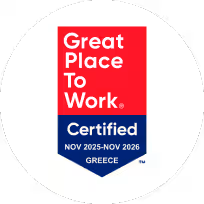Breaking Down Barriers in Modernizing Federal HR with AI Skills and Integrated Systems

Discussion with John Bersentes
John Bersentes, a senior national account manager at Indeed.com, has spent nearly two decades at the intersection of public sector hiring, HR tech, and EdTech. He has worked extensively with federal agencies and contractors across media, publishing, marketing communications, applicant tracking systems (ATS), learning management systems (LMS), and AI-driven solutions. In this article, Bersentes explores the federal government’s path toward modernizing talent management, highlighting legacy challenges, the role of AI in skills-based economies, the need for integrated systems, and the importance of purpose-driven careers.
From Legacy ATS to Integrated LMS
Federal agencies face long-standing challenges in replacing outdated ATS platforms with integrated LMS solutions. Technical debt, compliance costs, and homegrown systems often hinder progress. “For most of the federal government's spend on technology about 35% of the cost is attributed to compliance issues”, Bersentes explains. These costs push agencies toward commercial off-the-shelf solutions and shared services, but integration remains difficult given the insurmountable technical debt many agencies face on IT Modernization when it comes to simply putting a new UI on legacy systems that may or may not provide sustainability from an affordable or cost efficient perspective in the long term.
Data silos are a major barrier. ATS platforms, SAP, and other legacy tools often fail to communicate effectively with LMS or performance systems, slowing onboarding and impairing performance management. Vendors like ServiceNow offer overlays to bridge gaps, yet FedRamp compliance continues to delay cloud adoption and poses risk of bias for more forward leaning less mature AI based HR and Learning tech, for us at Indeed putting the candidate first and balancing safety and trust speaks to the power of keeping the HI in AI meaning keeping the human in the loop.“The FedRamp process needs to be accelerated, and that's causing really slow adoption of more forward-looking cloud-based solutions”, he emphasizes.
Lack of or last minute, change management further complicates transitions. HR teams remain tied to regulatory frameworks dating back to World War II, making it difficult to adopt continuous learning models. Bersentes stresses that without structural updates, modernization efforts will continue to stall.
Skills-Based Talent Management in the Age of AI
AI is reshaping federal talent management by enabling a shift from requisition-based hiring and self-attestation of assessments on likert scales to skills-based matching. Bersentes notes that federal agencies are beginning to recognize the value of uncovering talent adjacencies, skills that may not directly match a job description but can be applied through cross-skilling, reskilling or upskilling. “Skill-based matching identifies adjacent skills and helps uncover hidden or untapped talent pools like veterans or mid-career professionals”, he explains.
Generative AI tools are also being deployed to enhance job recommendations, curate personalized training paths, and design logical career trajectories. This transition is turning platforms like Indeed into the full-fledged talent marketplace ecosystem that it is today, with AI agents assisting both HR professionals and job seekers. “We really are a talent marketplace that evolved from being the pioneer in job aggregation to be born out of the legacy contextual based job board market per se”, Bersentes says. This evolution reflects the federal shift toward mobility, efficiency and inclusivity in hiring, while simultaneously raising the importance of addressing bias and security challenges inherent in large language models, via RAG, Vector Search and other areas related to governance and compliance to privacy at a time when the technology is preceding the policy.
Matching People to Purpose Career Mobility and Retention
Beyond efficiency, Bersentes stresses that federal agencies must focus on aligning work with purpose if they hope to recruit and retain younger generations. He observes that less than 5% of the federal workforce is under 30, while 35% of employees are already at retirement eligibility. “When I talk about matching people to purpose, it's aligning the employer value proposition, it's understanding and looking at a Venn diagram to come up with an EVP that resonates across a multigenerational workforce”, he explains.
Given the government’s inability to compete with the private sector on pay or speed of hiring, agencies must invest in branding and career mobility. By linking learning platforms directly to mission outcomes, agencies can offer younger workers a sense of calling, similar to firefighters or public servants motivated by service rather than salary. Transparent pathways for career advancement, coupled with targeted upskilling in mission-critical areas like cybersecurity and public health, can foster long-term commitment as well as workforce development improvements in the skills-based economy of today.
“Where those brand attributes that are promised by leaders and delivered well in the EX Employee Experience to your rank and file while educating the candidate on the work as reviews are the new currency for both Hiring Managers, and candidates means shifting public opinion as to the culture and that is where it must be authentic and resonate to gain mind and market share of the best talent that really becomes the core message where we can kind of start talking about resilience and longevity and a full candidate life cycle solution”, Bersentes highlights. By emphasizing purpose-driven work, agencies can attract and retain talent despite structural disadvantages.
Success Stories Integration Driving Measurable Impact
Examples from agencies underscore the benefits of integrated systems. Bersentes recalls agencies like the U.S. Capitol Police and the Environmental Protection Agency (extended enterprise educating key stakeholders for instance), where unified ATS and onboarding reduced hiring cycle times by up to 40%.
Beyond hiring speed, these integrations improve retention by enabling interactive career pathing and mobility. For instance, the Department of Veterans Affairs introduced tools to visualize career trajectories from entry-level nursing to specialist roles. While these platforms attracted significant external interest, the lack of standardized skills ontologies and LERs (Learning and Employer Records) limited their effectiveness. Bersentes acknowledges,“Higher employee satisfaction scores typically tend to be the result of putting in place newer systems and solutions that speak to both the candidate and the HI into AI for HR”.
Still, change management remains a hurdle. Bersentes likens it to ‘giving somebody the keys to a Ferrari that doesn't know how to drive a stick shift’. Proper training, user adoption strategies, and replicable onboarding processes are essential to ensuring sustained impact.
Structural Barriers Compliance Procurement and Fragmentation
While progress has been made, structural and policy barriers continue to hinder modernization. Procurement cycles are often too rigid, leaving agencies trailing innovation. “Acquisition cycles often outpace innovation”, Bersentes explains. Moreover, compliance-first cultures divert significant resources away from innovation. “One very senior DoD individual told me that Fed Ramp's best friend was Russia and China because we can't bring on newer solutions until we've addressed the security standards”, he recalls.
Fragmentation across agencies further exacerbates the problem. With some agencies operating dozens of separate LMS and ATS systems, achieving a unified source of truth for talent data becomes nearly impossible. Without standardization, measuring and managing workforce effectiveness remains a challenge. Shared services initiatives offer a path forward, but adoption has been slow and uneven.
Inclusive Hiring and the Role of Technology
As agencies pursue diversity, equity, inclusion, and accessibility (DEIA) goals, technology plays a critical enabling role. Bersentes highlights the importance of compliance with accessibility standards such as WCAG 2.1, alongside tools that detect and eliminate biased language in job descriptions. “By adjusting that language, more women might apply. We need those types of tools now to level the playing field”, he explains.
He also points to frameworks like citizen-centered digital engagement strategies and OPM’s Human Capital Business Reference model as well as previous MSPB Merit Systems Protection Board and DEIA strategic plans as essential in promoting equity in hiring. Innovative approaches, such as hackathons, code sprints, and direct hiring authority pilots, have already shown promise in accelerating inclusive hiring practices. However, Bersentes warns that fragmentation and lack of data integration continue to limit progress from incremental to real transformation changes. Moving to a two page resume effective September 27th by OPM USAJobs is a great first step in a journey that has been ongoing for years.
Future-Proofing Federal Workforce Strategies
Looking ahead, Bersentes stresses the need for unifying ATS and LMS systems into a single digital talent fabric. “It’s the learning and the content. We want to connect roles with skills and jobs, but it’s about making learning accessible in the flow of work”, he says. Unified platforms will not only support upskilling but also provide the continuous feedback loops necessary for adapting to shifting workforce demands as part of your skills strategy.
Future-proofing also requires policy reform. Bersentes recounts cases where employees trained for new roles in cybersecurity discovered that compensation policies had not been updated, leaving them worse off financially. Standardized learning records, governmentwide skills registries, and continuous data integration are essential to avoid such pitfalls. Veterans, in particular, stand to benefit from improved translation of military occupational specialties into civilian skills.
Bersentes concludes that true resilience depends on dismantling silos, embracing skill-based models, and designing inclusive, future-ready systems. He stresses that integration reduces time to hire and accelerates upskilling, and that building resilient workforce strategies requires centering everything around skills, career development, performance management and talent pipeline to build the future-workforce career pathways we need in mission critical occupations and roles.
Key Takeaways for Executive Leaders
Modernizing federal HR requires more than new technology, it demands a holistic shift in how agencies hire, train, and retain talent. From breaking down system silos to embracing skills-based models, the federal workforce must be guided by purpose, equity, and adaptability. These takeaways highlight the strategic priorities executive leaders should focus on to build a resilient, future-ready HR ecosystem.
- Integration Reduces Complexity: Breaking down silos between ATS, LMS, and other HR systems accelerates hiring and strengthens upskilling.
- Skills-Based Models Are the Future: Moving from requisition-driven hiring to skill-based marketplaces uncovers hidden talent and builds resilience.
- Purpose Fuels Retention: Agencies must align branding and career mobility with mission outcomes to attract and retain talent.
- Compliance and Procurement Must Evolve: FedRamp and rigid acquisition cycles continue to stifle innovation; standardized frameworks and shared services are critical.
- Equity and Accessibility Drive Value: Inclusive technologies and DEIA frameworks are essential to leveling the playing field.
- Change Management Is Critical: Training, user adoption, and replicable onboarding processes ensure modernization efforts deliver sustained impact.
-p-1600.avif)










.avif)









-01.avif)


